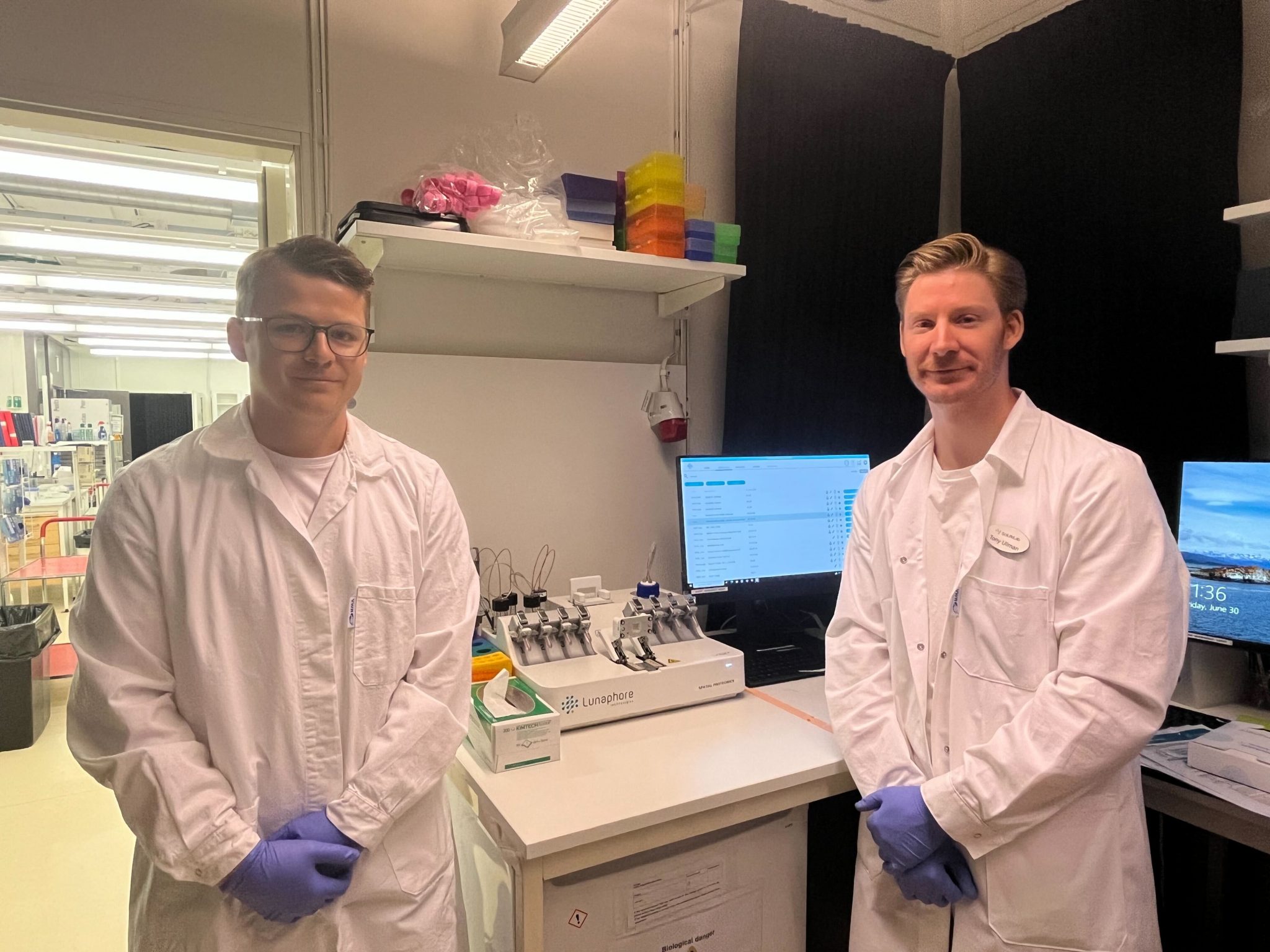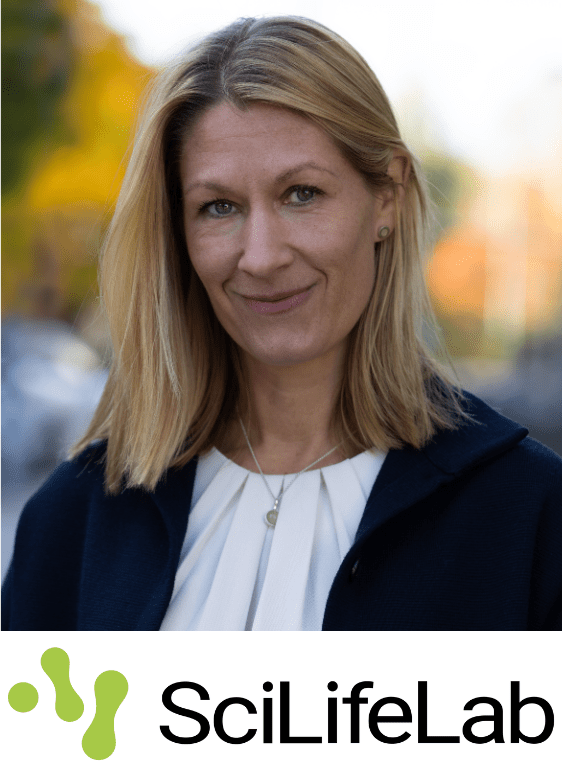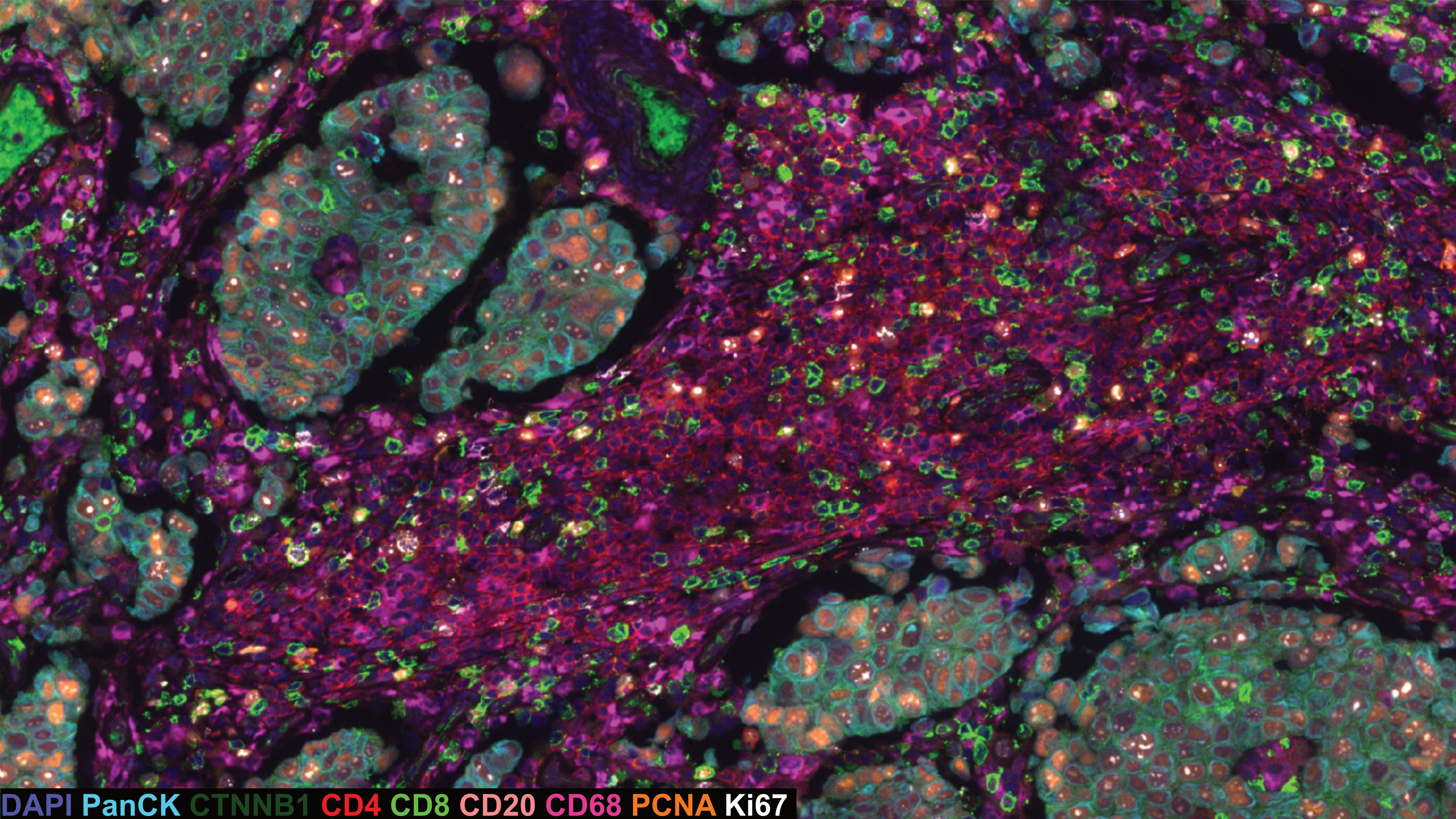Industry case: SciLifeLab Spatial Proteomics key in enhancing advanced Navinci products and Lunaphore technology
Navinci, a biotech pioneer committed to pushing the boundaries of spatial proteomics, e.g., visualizing localizations of proteins and their interactions at the cellular and subcellular level, collaborates with SciLifeLab and Lunaphore. By applying automation and multiplexed imaging, they have created a user-friendly product that enhances research into various diseases.
Navinci provides high-performance reagent kits to serve scientists in drug development and pathology research to accurately study proteins and their interplay directly in cells and tissue samples at a level not possible with other methods. Their proximity ligation assay (PLA) solution aims to visualize protein-protein interactions and post-translational protein modifications in situ.
The three-part collaboration project is intended to show proof of concept adapting Navinci technology and products on Lunaphore automatic multiplex instruments (LabSat® and COMET™). The SciLifeLab Spatial Proteomics unit implement this adaptation enabling this as an offer to scientists active in the field of spatial proteomics performing e.g. translational immuno-oncology or oncology research or other disease areas.
Scientists use in situ proximity ligation assay (isPLA) technology to better understand biological mechanisms and reveal the responses to disease and drug treatment. In particular, the effects of Immune Checkpoint Inhibitors can be studied in the tissue microenvironment, giving higher chance of identifying strong drug candidates and to stratify patients that will benefit from treatment.
“The in situ technique, originally developed by Ulf Landegren, has seen a lot of development in recent years. Navinci has refined it, creating a more robust, user-friendly, and now, via this collaboration, automatable product. Working with Charlotte Stadler’s team at SciLifeLab, we have adjusted and adapted the technology to fit the automated setup of Lunaphore’s instruments,” says Navinci CEO Robert Gunnarsson.

Lunaphore, recognized for its automation in assay procedures, is the third part of this collaboration. Since 2020, Lunaphore collaborates with Charlotte Stadler and the Spatial Proteomics Unit at SciLifeLab, who was one of their early beta testers of COMET™ – a platform allowing for automated multiplexed imaging. In beginning of 2022 Stadler´s lab was equipped with COMET™ and LabSat® thanks to a Swedish Research Council (VR) grant for infrastructures. With this in place, the three parties made common efforts to automate the isPLA protocol from Navinci, by creating a new program for the assay.
“This collaboration will enable the automatization of protein-protein interaction assays to offer a full spectrum of application to the user. Enabling researchers to identify clinically relevant biomarkers or a disease signature in this way has tremendous potential to advance translational and clinical research. It also demonstrates Lunaphore’s commitment to advancing spatial biology through innovative partnerships,” says Lunaphore’s Chief Technology Officer Diego G. Dupouy.
The advantages of an automatable isPLA include time efficiency, the ability to multitask, and the ability to obtain more reproducible results. Further, the combination of isPLA with multiplexed imaging of proteins can generate extensive datasets, uncovering new insights and results. There are important sample sets awaiting analysis, where the results will be coupled to clinical patient outcome. These studies will be feasible now that the preparation is shortened from 2 days to 7 hours.
“This collaboration warrants SciLifeLab to provide cutting edge technology to researchers in academia, industry and healthcare. In fact, we could be the first lab in the world to offer this as a service. The users get access to high-quality methods executed with expert staff. Automating proximity ligation technology is just the beginning. We aim to add immunofluorescence imaging to the technique, this way we could gain an even deeper understanding of for example the tumor microenvironment. ” says Charlotte Stadler, Head of the SciLifeLab Spatial Proteomics unit.

SciLifeLab
Charlotte Stadler
Head of the SciLifeLab Spatial Proteomics unit
SciLifeLab Spatial Proteomics
charlotte.stadler@scilifelab.se

Navinci Diagnostics AB
Robert Gunnarsson
CEO
Navinci Diagnostics
robert.gunnarsson@navinci.se

Lunaphore Technologies SA
Diego G. Dupouy
Co-founder and CTO
Lunaphore Technologies
diego.dupouy@lunaphore.com





